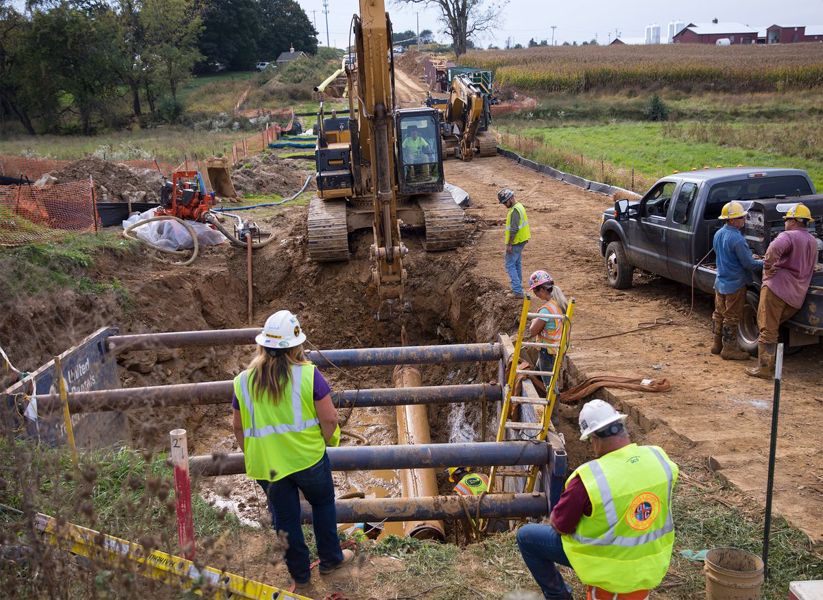
Pipeline operator says “necessary upgrade” caused greenhouse emissions.
Powerful Methane Cloud
Seen by Satellite Came From Georgia Pipe
Josh Saul / Bloomberg
(December 31, 2021) — Williams Cos., one of the biggest transporters of natural gas in the US, said an intentional release of a powerful greenhouse gas detected by satellite was caused by work on one of its pipelines.
The cloud of methane, which is the primary component of natural gas and traps 84 times more heat than carbon dioxide over its first couple of decades in the atmosphere, was spotted over Georgia on Dec. 14 by a European Space Agency satellite.
Geoanalytics firm Kayrros SAS analyzed the data and estimated an emissions rate of 14 tons of methane an hour was needed to generate the plume. If the release lasted an hour at that clip, it would have the same short-term climate impact as the annual emissions from 255 cars in the US.
When contacted by Bloomberg, Williams said it was responsible for the release, which occurred when it upgraded its Transcontinental pipeline system southwest of Atlanta, Georgia.
The Tulsa, Oklahoma-based operator couldn’t immediately say how much methane was released during the work and said it used “best practices to safely purge air out of the pipeline and reduce methane emissions before returning the pipeline into service.’’
Methane clouds frequenly occur over Four Corners area.
Non-emergency flaring and venting of methane should be significantly mitigated or eliminated to keep global temperatures from rising more than 1.5° Celsius and to maintain a pathway toward a net zero energy system by 2050, according to the International Energy Agency.
The autonomous intergovernmental organization formed after the 1973 oil crisis has increased calls on fossil fuel operators to halt intentional releases of the greenhouse gas.
“If the oil and gas industry is going to claim that it needs to leak or vent methane, then it’s very difficult to see how it can also make the case that natural gas is going to be part of the solution towards achieving our shared climate objectives,’’ Christophe McGlade, head of the energy supply unit at the IEA, said in October when asked about operators who defend intentional releases.
Vast Empire of Dying Gas Wells Is Spewing Methane — and Money